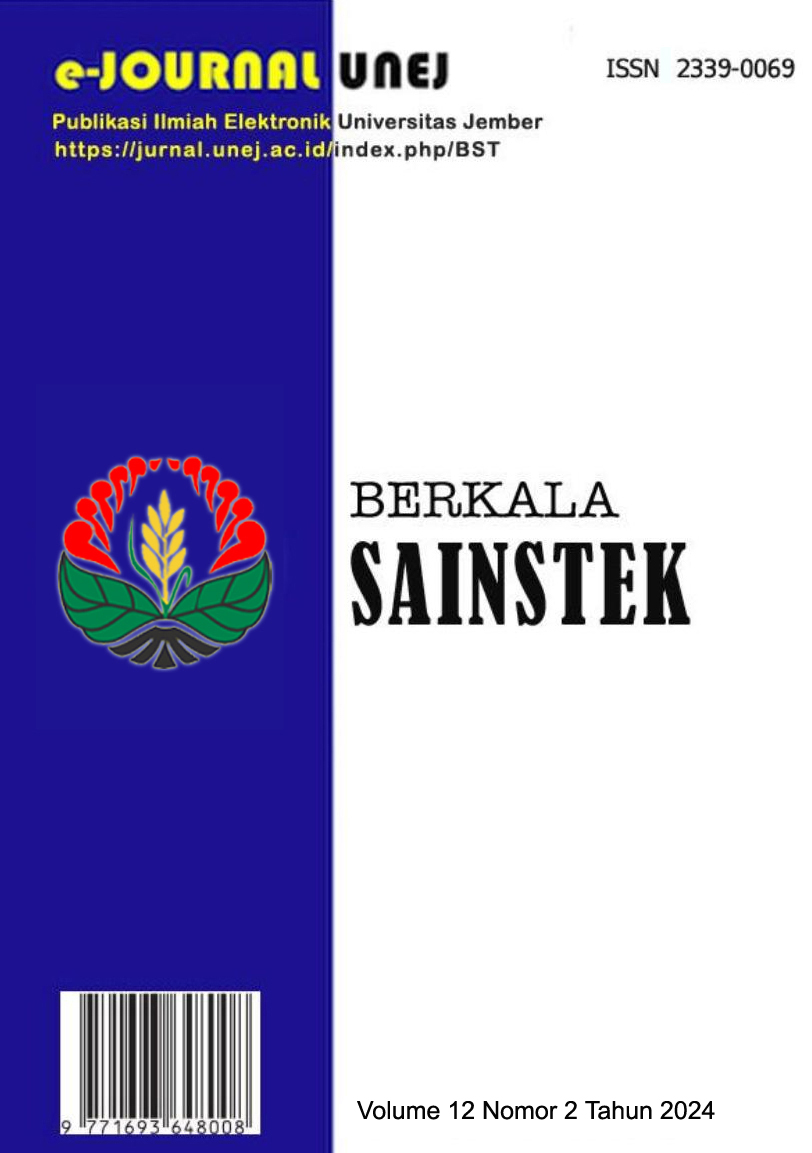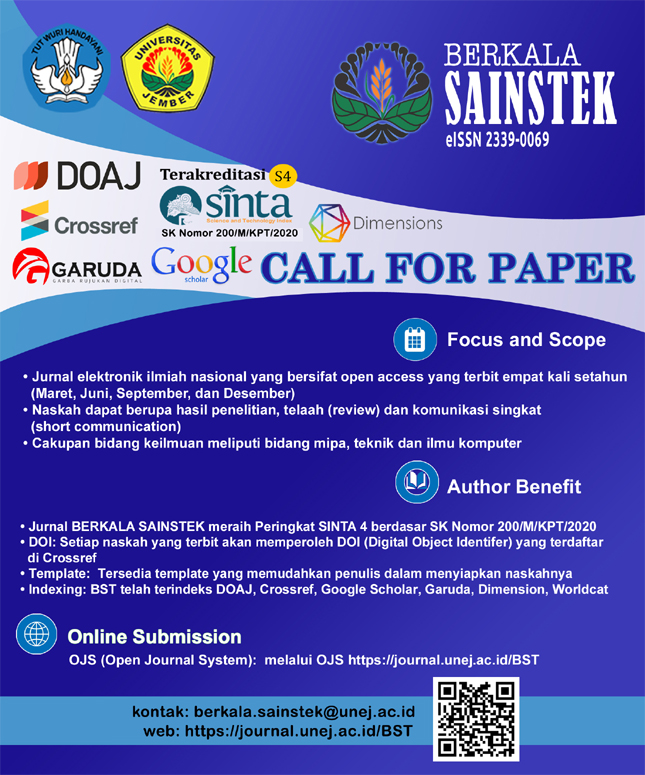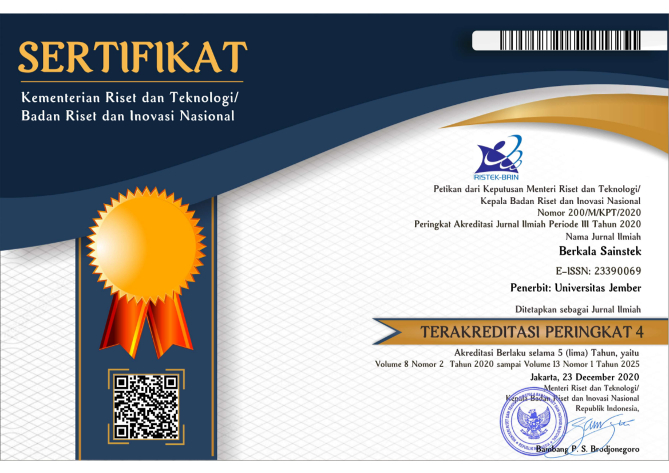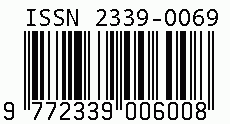Determination of Reducing Sugar Groups from Hydrolysis of Arthrospira platensis Microalgae using Microwaves
DOI:
https://doi.org/10.19184/bst.v12i2.47304Keywords:
Arthrospira platensis, Bioethanol, Microalgae, Microwave, Saccharomyces cerevisiaeAbstract
The depletion of fossil fuel sources and increasing carbon dioxide (CO2) emissions have encouraged research into renewable energy sources. Bioethanol is an environmentally friendly energy source with considerable potential for reducing dependence on gasoline. Bioethanol is produced from the fermentation process of monosaccharides. The first and second generations of bioethanol are derived from food crops, agricultural waste, and plantation waste, whereas the third generation is produced from microalgae. Arthrospira platensis is a carbohydrate-rich microalgae. This study attempts to determine the content of reducing sugar groups which are monosaccharides formed from a hydrolysis with microwaves. A total of 10 g of microalgae powder was added to 100 mL of 0.3 M H2SO4 solution. The hydrolysis process was carried out in a microwave reactor at a temperature of 100°C for 90 minutes. The hydrolysate obtained was then fermented with Saccharomyces cerevisiae anaerobically in a shaking water bath. The High Performance Liquid Chromatography (HPLC) test was performed to identify reducing sugar groups in the hydrolysate, and the Gas Chromatography (GC) test was performed to determine the concentration of bioethanol produced during the fermentation process. Meanwhile, the solid content of biochar that remained after hydrolysis was analyzed using Fourier-Transform Infrared Spectoscopy (FTIR). The HPLC test findings showed that the glucose concentrations before and after fermentation were 10.52 and 1.91 g/L, respectively, indicating that 81.8% of the glucose was converted to bioethanol. Furthermore, the distillation results from the fermented hydrolysate were analyzed using GC, yielding a bioethanol content of 3.90 g/L.






